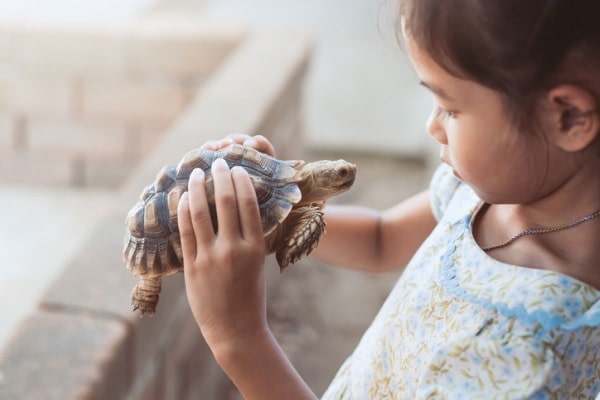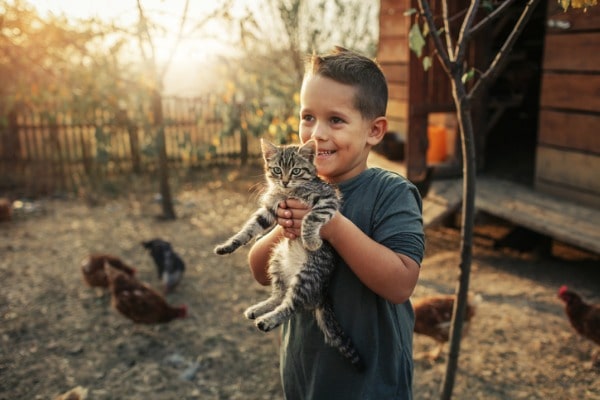Why Kids Should Have Pets
Owning a pet, such as a dog or cat, can help your kids learn important life skills. Pets can also help children with their mental health.
- 2.5 min read
- child development
- health & wellness

There are many benefits associated with kids having pets. Whether your child wants a dog, cat, bird, or another type of animal, pets can help kids with mental health while teaching them life skills.
If you and your co-parent are considering getting your child a pet, you should consult with each other. For kids that transition between households, owning a pet might come with additional challenges or coordination, so it’s important to discuss the matter if you can.

If you do decide to get a pet for your children, here are some of the benefits for kids:
Higher self-esteem
Pets, such as dogs, cats, and others, are known to show unconditional love, and that’s a boost to a human’s self-esteem. A review of 22 studies on pet ownership and children found a strong association between childhood pet ownership and increased self-esteem, as well as this next benefit on our list.
Companionship
Children are not as lonely with a pet in their life. Even when children are having a tough time in their relationships with other kids, a pet is always there for them. If the parent works, rather than coming home to an empty house after school, a pet is there to greet them.
Leadership skills
A researcher at the Cummings School of Veterinary Medicine at Tufts University found that adolescents who had animal experiences were more likely to see themselves as important contributors to their communities, such as taking on leadership roles in organizations or doing community service. Taking care of an animal has many components necessary to leadership, such as responsibility, patience, and respect and empathy toward others.
Increased physical activity
Pets, particularly dogs who need regular walks and exercise, can help promote a more physically active lifestyle. Getting kids off their screens and devices and engaged with their pet is a plus in most parents’ books!
Less Stress
Exposing kids to pets may help ease their anxiety. Blood pressure, heart rates, and behavioral distress in children ages 3 to 6 have all been shown to go down when an animal is present. In fact, at children’s hospitals across America, doctors and nurses are experimenting with animal-assisted therapy programs to reduce anxiety and motivate kids to reach goals, such as walking, taking medicine, and eating.

Pet Responsibilities
While there are lots of benefits to adding a four-legged friend to your family, taking on a pet is a huge responsibility, so you shouldn’t rush into this decision. Pets need training, exercise, supervision, attention, baths, and proper hygiene. Pets also need regular veterinary care, which can add up quickly. If your family is frequently on-the-go, you’ll have to consider other expenses such as pet sitters, boarding, or even daycare.
Additionally, the CDC notes some risks to having pets for children five years of age and younger or people with weakened immune systems. For example:
“Households with children five years of age and younger should not have pet reptiles (turtles, lizards, snakes), amphibians (frogs, toads), or backyard poultry because of the risk of serious illness from germs spread between these animals and younger children.”
If you do decide to take on this responsibility and commit to adding a pet to your family, it’s a bond that can change your kids’ lives for the better. With proper care and consideration, everyone in your family can experience benefits from having a pet.